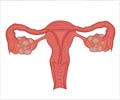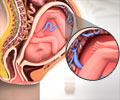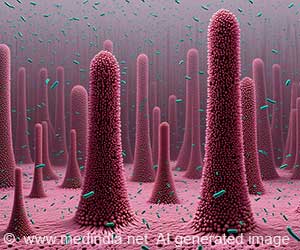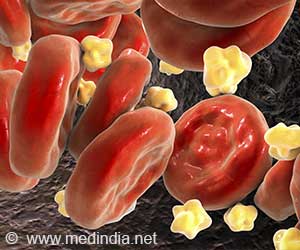Microplastic fragments were found in the human placenta in the fetal, maternal, and amniochorial membranes.
- Microplastics (MP) were detected in human placentas
- The microplastic fragments were identified in all placental sections - fetal, maternal, and amniochorial membranes
- The microplastics carry with them substances which act as endocrine disruptors and could cause adverse pregnancy outcomes including preeclampsia and fetal growth restriction
Microplastics can move from the environment into living organisms and several reports have found their presence in food, drinking water, seafood, sea salt, the gastrointestinal tract of animals, and also in human intestines.
Microplastics can have long term effects on human health.
TOP INSIGHT
Microplastic fragments were detected in four of the six human placentas in the fetal, maternal, and amniochorial membranes. These fragments are harmful and can lead to adverse pregnancy outcomes including preeclampsia and fetal growth restriction.
Read More..
Analyzing the Placenta
For the study, six human placentas were collected from consenting women with physiological pregnancy and analyzed by Raman Microspectroscopy to determine the presence of microplastics. A plastic- free environment was adopted during the study to prevent contamination.The placenta was divided into three sections - the fetal side, the maternal side, and the chorioamniotic membranes (part of the amniotic sac that surrounds and protects the fetus).
On analysis, 12 microplastic fragments ranging from 5 to 10 micrometer in size were found in four of the six placentas. Out of the 12 fragments, five were found on the fetal side, four on the maternal side and three in the chorioamniotic membranes.
All the fragments were pigmented with man-made paints, coating, plasters, fiber paints, adhesives, polymers, cosmetics, and personal care products. Some pigments found were iron hydroxide oxide yellow used for coloration of plastics and rubber and a wide variety of cosmetics like BB creams and foundations.
Pigment copper phthalocyanine and phthalocyanine are used for staining plastic materials and for finger paint. The pigment ultramarine blue is used as pigments in cosmetics like soap, lipstick, eye shadow, mascara, and other make-up products. The pigment violanthrone is used for textile dyeing, adhesives, fragrances, air fresheners, and coating products.
Effect on Fetus
The placenta is a barrier present between the fetus and mother that provides oxygen and nutrients to the baby and removes the waste products from the baby’s blood. It also helps to differentiate between self and non-self, necessary for immunity.This mechanism can be disturbed due to the presence of microplastics as they accumulate in the body and show toxicity by enhancing and or inducing immune response. This can hamper the defense mechanisms against pathogens and change the utilization of energy stores.
Micro plastics enter the maternal bloodstream by the respiratory and the gastrointestinal tract after which it can reach the placenta.
Effect On Pregnancy
Microplastics can alter several cellular regulating pathways in placenta like:- Immunity mechanisms during pregnancy
- Functions of atypical chemokine receptors governing maternal-fetal communication growth-factor signaling during and after implantation
- Signaling between the embryo and the uterus, and
- Trafficking of immune cells like natural killer cells, macrophages, T cells, and uterine dendrite cells during normal pregnancy.
Conclusion
The placenta plays an important role in supporting the fetus development and in acting as an interface between the fetus and the external environment. The presence of such harmful plastic particles is a matter of great concern.Transgenerational (trauma transferred through generations) effects of plastics on metabolism and reproduction can affect pregnancy outcomes and fetus.
Additional studies need to be performed to determine if the presence of microplastics in the human placenta can trigger immune responses or the release of toxic contaminants that can be harmful to the pregnancy.
Reference :
- Plasticenta: First evidence of microplastics in human placenta; Antonio Ragusa et al; Environmental International Volume 146, January 2021; https://doi.org/10.1016/j.envint.2020.106274
Source-Medindia
 MEDINDIA
MEDINDIA





 Email
Email







